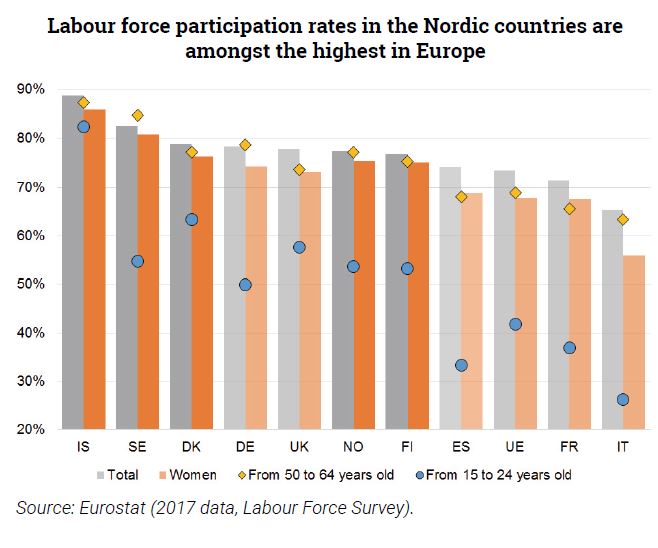Trésor-Economics No. 241 - Labour markets in the Nordic countries
Labour markets in the Nordic countries are seen as combining low unemployment with a high level of worker protection. Although based on a common base of principles, the reality is more complex and less homogeneous between countries.
The Nordic countries (Denmark, Finland, Iceland, Norway and Sweden) have enjoyed remarkable macroeconomic performance levels since the end of the 1990s. Accordingly, their growth rates have been consistently higher than those of the EU and poverty rates are amongst the lowest in OECD Member countries with Iceland, Demark and Finland figuring in the top five together with the Czech Republic and France. Unemployment rates are lower than the EU average (6.8% in 2018) in Norway (3.9%), Iceland (2.7%), Denmark (5.0%) and Sweden (6.3%), with only Finland having a higher rate (7.4%).
This success means that the Nordic models are held up as international benchmarks and this is confirmed by their top international rankings for quality of policies. This is combined with deep-seated regional identity and the fact that these countries are able to preserve the competitiveness of their companies whilst at the same time ensuring that individuals are protected by a generous welfare state.
As regards the operation of their labour markets, the Nordic countries have common basic values and principles. These include the respective role of unions and the government which fosters social dialogue based on consensus, gender equality, the emphasis on lifelong education and training to help workers adjust to changes in the workplace and the social leverage of work to promote acceptance of so-called activation policies. As a consequence these countries now have relatively low unemployment rates, high levels of education and labour force participation rates, among the highest in the world for the labour force as a whole, as well as for women, young people and older workers.
However, countries still differ within the region, especially in terms of the amount of social protection for the unemployed. This is due to the fact that, during the past twenty years, the Nordic countries have all reduced social protection levels and the amount of government expenditure in relation to GDP to focus on labour market activation and integration policies. Nevertheless, the pace and type of national reforms differ across countries. Lastly, the Nordic countries also have divergent results in terms of integrating populations such as the lowest-skilled workers and immigrants.
